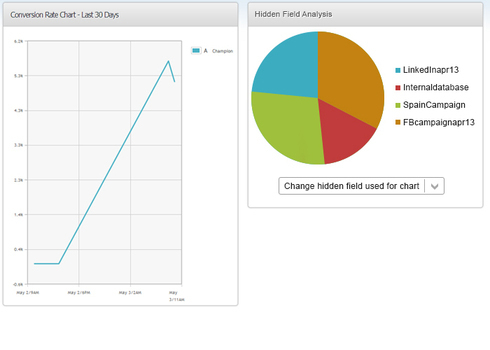Oliver, I think you’re the first person to actually submit a mockup of your idea Ñ I’m thoroughly impressed!
Are you using UTM codes for this campaign and traffic source data, or do you have your own parameters that you track?
Oliver, I think you’re the first person to actually submit a mockup of your idea Ñ I’m thoroughly impressed!
Are you using UTM codes for this campaign and traffic source data, or do you have your own parameters that you track?
Thanks Carter, If I’d know I was the first, I would have put a bit more effort into it!
Hopefully I’ve understood your question correctly - I usually just tag it to the end of the URL to record where the enquiries are coming from, e.g.
domainname.com/my-landing-page?source=LinkedinMay13
Haha it looks great, no need for more effort!
That was exactly what I was asking, thanks. A lot of customers do this same thing, but using the utm_ format that google uses. That way you can accomplish the same campaign/source tracking in Unbounce, as well as have Google Analytics automatically handle these tags nicely.
The reason I mention this, is we will likely have better support for utm_ codes specifically in the future, so if you’re able to I might suggest using their format. They have a nice link building tool over here: https://support.google.com/analytics/…
Thanks again for the visualization idea Oliver.
Hey guys, also just wanted to add that on the subject of UTM tracking parameters, KISSmetrics does a really great job of keeping tracking these. I know Google Analytics can be a bit of a beast to program so Oliver, you may be interested in checking KISSmetrics out.
You guys nailed it, but if I can suggest one more way to capture hidden fields from AdWords & Bing Ads - use their ValueTrack parameters to dynamically create URL parameters for keyword, campaign, ad creative, network (search/display/search partners), mobile device (yes/no), display network URL, ad position, etc. Then, capture all of these with hidden fields.
There are a lot of ways to add valuable information to a lead. Our clients LOVE knowing which search query from Google triggered the lead.
Here’s an example URL that we use:
http://yourUnbounceDomain.com/?kw={ke…
Jumping in to this thread to ask a question about the ValueTrack parameters.
Backstory: We were successfully using Marketo hosted landing pages for our PPC campaigns. Each LP had a Marketo form with hidden fields for network, ad group, etc. Two of the hidden fields (AID and KW) used ValueTrack parameters:
ex. http://info.companydomain.com/2013_LP…
Now… we are using UNBOUNCE landing pages, each has an iframe that points to a Marketo LP with ONLY a Marketo FORM. (Seriously, just the form.) The form has all the same hidden keywords.
When the lead goes into SFDC (via Marketo) after the form is filled out, NW & CN make it in no problem (values say Google_Search and Retain) BUT the value of AID and KW just say “{creative}” and “{keyword}”.
Why would the ValueTrack not work with flow of: Google Search > Unbounce LP > iframe of Marketo LP/FORM > Form Submitted > SFDC
Real quick - so I know utm is tracked. How can I ask Unbounce to take down ValueTrack params?
Hey Mark - if you want to grab ValueTrack parameters as well, you’ll just need to add hidden fields to your forms that match the ValueTrack fields that you’ve tagged to your destination URLs.
Just add fields named “matchtype”, “network”, etc as hidden fields and any visitor that hits the page with those parameters will autofill those hidden fields. Then they’ll be capture on form-submit. We’ve got more detail on capturing hidden field values from URL parameters here: http://support.unbounce.com/entries/3…
Thanks Quinn!
So basically any URL parameters are captured? I was under the impression that it only works with UTM parameters.
They won’t be captured automatically, but any parameter, where you’ve set up a form field with a matching name will be. That goes for UTM or anything else.
Another use case that we see is for email marketing. MailChimp (and most other email providers) let you use tags to dynamically send values like first and last name, so you can tag those to your outbound email links and then autofill certain form fields for your visitors using the same function with a non-hidden field.
Great, thanks again Quinn!
Hi Manu,
Just wanted to give you a quick update re: Marketo. We’ve officially released our Marketo Integration to the public, so if you’re on a PRO99 plan or up, you can take advantage of this integration right now. I’m not sure if it will help in your exact situation, but I figured it couldn’t hurt to let you know. :)
Head here to learn more.

